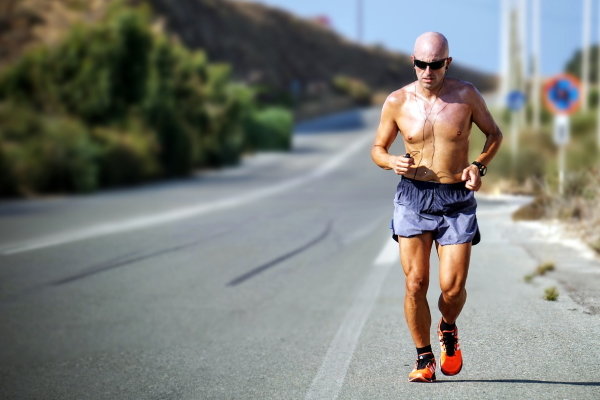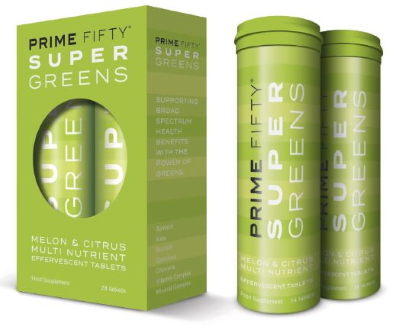6 Top Tips For Getting Fit In Your 50’s

Exercising in your 50’s and beyond isn’t the same as exercising in your 20’s and 30’s - your joints may hurt more; your muscles might be stiffer, and you’ll probably find that you just don’t have the stamina that you once did.
Fortunately, there are things you can do prevent and help with these problems as you age so you can look forward to many more years of participating in your favourite sports and activities and making your “golden years” healthy and enjoyable.
So, if you are thinking about starting up a new exercise routine and it’s been a while since you had any kind of fitness regime in place, then follow these top tips for starting up again in your 50’s.
1) Tailor your exercise routine according to your lifestyle and health conditions
When you are just starting an exercise regime, try to avoid compiling a strict schedule to adhere to. Instead look at how you can build up your fitness levels by incorporating 20-30 minutes of exercise into your daily life - walking or cycling instead of taking the bus or driving, getting off the train the stop before, taking the stairs instead of the lift, doing some laps when you take the grandkids swimming – all of these will make a difference and will let you build you up your regime gently.
If you have certain health conditions, then these will need to be considered. For example, if you have arthritis then you should absolutely exercise as it’s been shown to relieve arthritic symptoms and can strengthen muscles around the joints and prevent them from becoming too stiff. However, you need to think about participating in the type of exercise that doesn’t impose too much stress of your joints such as lower impact activities like swimming and cycling.
If you are going through the menopause then you may not feel like exercising – however, it can be great for alleviating some of the unpleasant symptoms – the rise in oestrogen levels post workout can help with hot flushes. Try a mix of aerobic training to improve mood and encourage hormone regulation and some resistance training to help with bone density.
2) Focus on functional training sessions
Once you’ve started to build up your fitness regime and you are ready to build in regular training sessions then think about the movements you make in every-day life and look to replicate these in your sessions – things like climbing the stairs, lifting, reaching, kneeling, getting up and down for your chair. By incorporating these movements into your regime, it will help you to become functionally fit for every-day life.
3) Supplementation
Collagen: Research has shown that consuming collagen supplements can increase muscle growth and strength in people with age related muscle mass loss. It also helps to maintain the integrity of your cartilage, which is the rubber-like tissue that protects your joints therefore could protect against and help joint pain. From the tender age of 25 your body begins to break down more collagen than it can make and the only way to absorb it directly is through supplementation.
Creatine: If you want to build muscle it’s also worth looking into taking a good quality creatine – it’s one of the safest, most thoroughly researched and most effective supplements to take for gaining strength and muscle building.
Vitamin D & Calcium: Your bone density decreases as you age so it’s important to put into place preventative measures to protect the health of your bones. Vitamin D is not only good for your bones – it’s also good for you heart – according to a study published in the European Journal of Preventative Cardiology, people with higher vitamin D tend to be more physically fit.
 Prime Fifty are the only supplements brand that are exclusively dedicated to the nutritional and wellbeing needs of the over 50’s with a whole range of products specifically designed to meet you unique needs – including supplements tailored for joint health, bone health, fatigue, heart health, vision support, brain and cognition and skin health to name a few.
Prime Fifty are the only supplements brand that are exclusively dedicated to the nutritional and wellbeing needs of the over 50’s with a whole range of products specifically designed to meet you unique needs – including supplements tailored for joint health, bone health, fatigue, heart health, vision support, brain and cognition and skin health to name a few.
They have also launched a new super greens effervescent tablet which gives you a tasty, all round multi nutrient blend with added superfoods such as kale, broccoli, spinach, chlorella and spirulina.
4) Make sure you incorporate dynamic warm ups and stretches
Unfortunately as we age, our mobility and flexibility decreases therefore it’s important to incorporate a dynamic warm up before your exercise session or indeed at any time during the day to ensure the risk of injuries is reduced and to help alleviate aches caused by a workout, poor posture or simply sitting for too long. Regular stretching that utilises a variety of flexibility training techniques is key to opening your body, making it feel looser and more flexible as well as for overall health and wellbeing. To increase mobility, focus on strengthening and stretching your muscles so your hips and spine don’t get locked up.
5) Boost your metabolism
As we age our metabolic rate starts to decline meaning it’s harder to lose weight. Resistance based circuits that include things likes squats and lunges are great for raising your metabolism. If you feel like you can do it, then you should also look at incorporating high intensity bursts of exercise into your routine as this will also help to rev up your metabolism.
6) Consult a specialist
Before you embark on any new fitness regime it’s always best to consult a specialist who can work through any health conditions or injuries with you and put together a tailored program that takes all of this into account and then is managed and tweaked as your fitness improves.